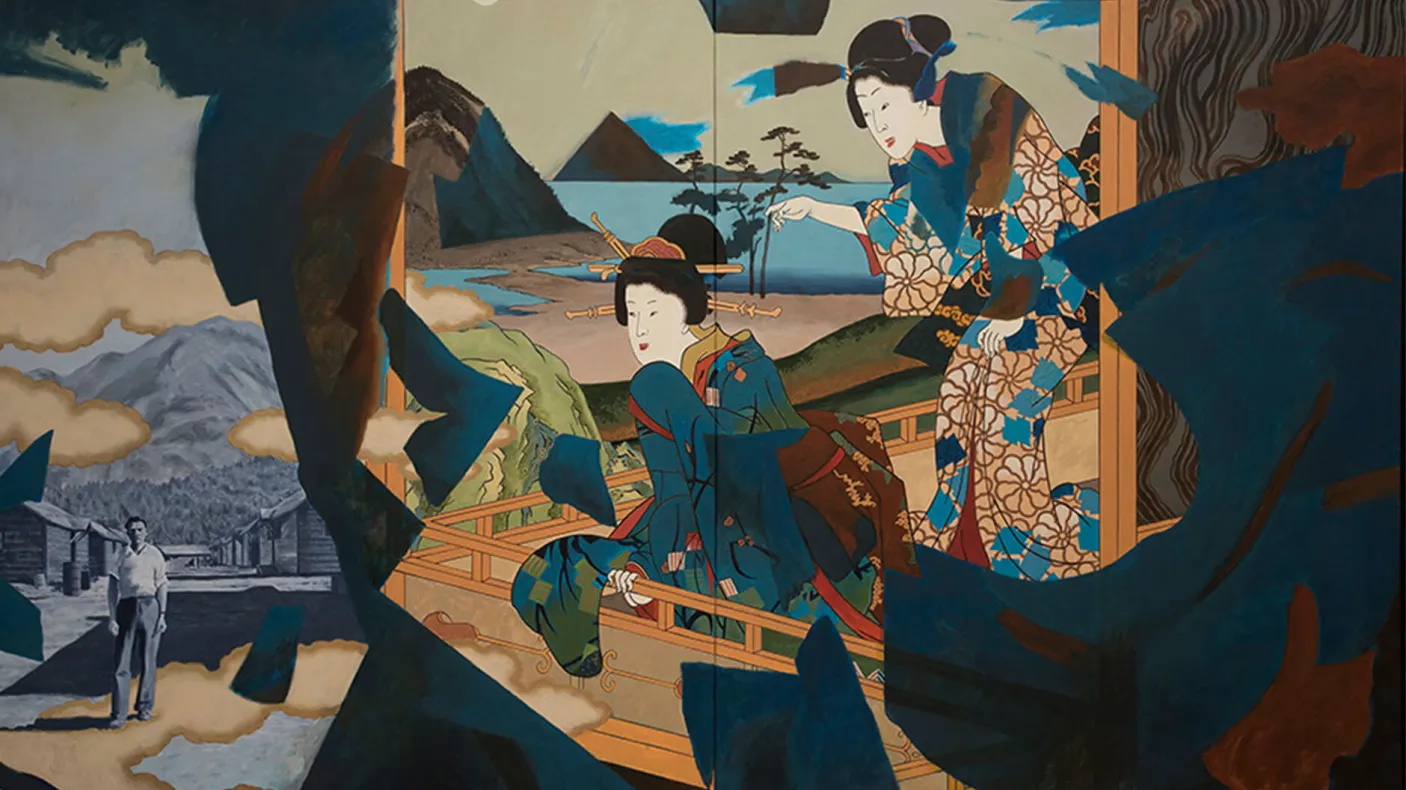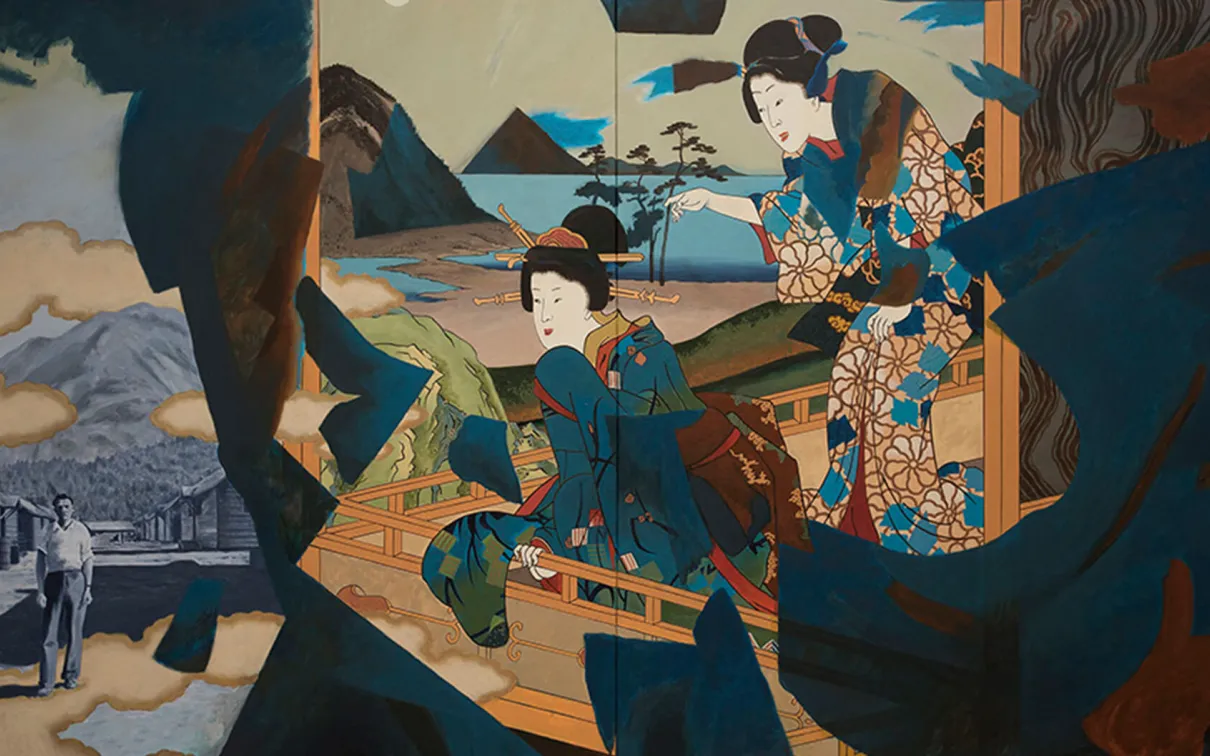“The word interior, to many of us, was synonymous with internment camp”
A new ROM painting, by Japanese-Canadian artist Norman Kiyomitsu Takeuchi, focuses on how identity is shaped by experience.
Published
Category
Author
The ROM recently acquired a painting
The ROM recently acquired a painting by Japanese-Canadian artist Norman Kiyomitsu Takeuchi. Interior Revisited (2012–2017) was part of the ROM-original exhibition Being Japanese Canadian: reflections on a broken world (2019). In the work, Takeuchi addresses his experience of the 1940s, when more than 22,000 Japanese Canadians were interned through the War Measures Act. In 1988, the Canadian Government issued its apology for this injustice, but for Takeuchi, the trauma of the event has remained. It has become an underlying theme in his work as he seeks to resolve how to best express the complexity of identity and identities. Here, he reflects on creating this powerful and poetic work.
The nature of making art means I’m continually striving to create something new. In that process, I seek to find the undiscovered by means of experimentation and risk-taking. Over time both the works and the thought processes evolve. This gradual change can result in looking at previously completed work in a different way. Interior Revisited is one such case in point. I had painted an initial version five years earlier, titling it simply "Interior." It was one of a series of paintings that addressed the 1940s internment of Japanese Canadians, which I myself experienced as a child. The word “interior,” to many of us, was synonymous with “internment camp” or just “camp.” “Where were you in the interior?” was—and for some still is—our way of connecting through shared understanding of that uprooting experience.
Interior Revisited exemplifies my determination to convey my story and my identity as a Canadian of Japanese descent through my art. In this painting, the juxtaposition of a resident from a BC internment camp and that of the kimono-clad women from a 19th century ukiyo-e print underlines not just my own cultural heritage, but also the racial profiling that was at the heart of my experience in the 1940s.
All these elements were present when I first embarked upon the Japanese-Canadian series twenty-three years ago, in 1998. The abstract shapes were starker then: the disconnection between the undefined and figurative jarringly distinct. But in reworking Interior, these shapes became more nuanced and sombre. The figures in the painting are rooted in realism, but the invented abstract forms, sometimes reshaped multiple times until they satisfied some sort of undefined criteria, are ambivalent shapes that express my disorientation of where I fit in the world. These heightened ambiguities have become a metaphor for my attempt to come to terms with that traumatic period, giving rise to constantly shifting moments of interior reflection.



